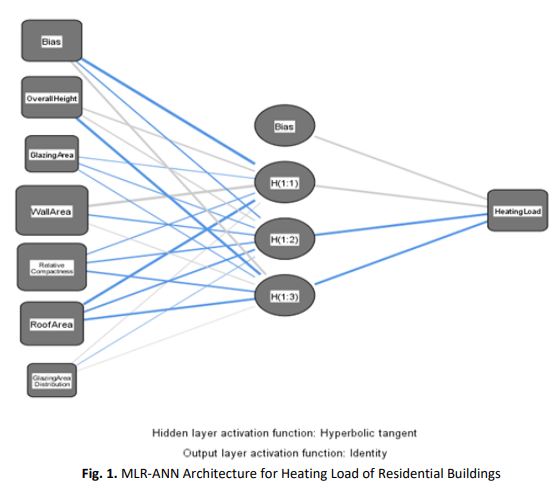Heating Load of Residential Buildings Using Multiple Linear Regression Artificial Neural Network
DOI:
https://doi.org/10.37934/arfmts.92.1.2838Keywords:
Heating load, Residential buildings, Multiple Linear Regression, Artificial Neural NetworkAbstract
Global warming is one metric of climate change which is defined as an increase in the average global temperature. Residential buildings contribute significantly to the pollution that causes climate change. It is essential to have a comprehensive understanding of the functions of highly energy efficient buildings in view of projected climate projections, the quality of their heating systems, and the impact on human health and well-being. Thus, in this study, the effects of six input variables which are Overall Height, Glazing Area, Wall Area, Relative Compactness, Roof Area, and Glazing Area Distribution on one output variable, namely Heating Load (HL) of residential buildings was investigated using Multiple Linear Regression and Artificial Neural Network (MLR-ANN) approaches. Two-layer hyperbolic tangent-identity transfer functions with 6-3-1 configurations were employed as it was found as the best neural network model. A dataset of 768 residential buildings was used for secondary data. The Mean Square Error (MSE), determination coefficients R2, as well as the percentage of normalized importance analysis were used to assess the statistical prediction capabilities of the MLR-ANN model. Based on the current findings, Wall Area is the most contributing factor towards HL, followed by Relative Compactness, Roof Area, Overall Height, Glazing Area, and Glazing Area Distribution. It can be suggested that HVAC (heating, ventilation, and air conditioning) systems should be implemented in residential buildings to reduce energy use. Natural ventilation is encouraged in buildings through vernacular design, and radiant heating and cooling systems as it is very effective and efficient way of providing thermal comfort within a structure.
Downloads

































